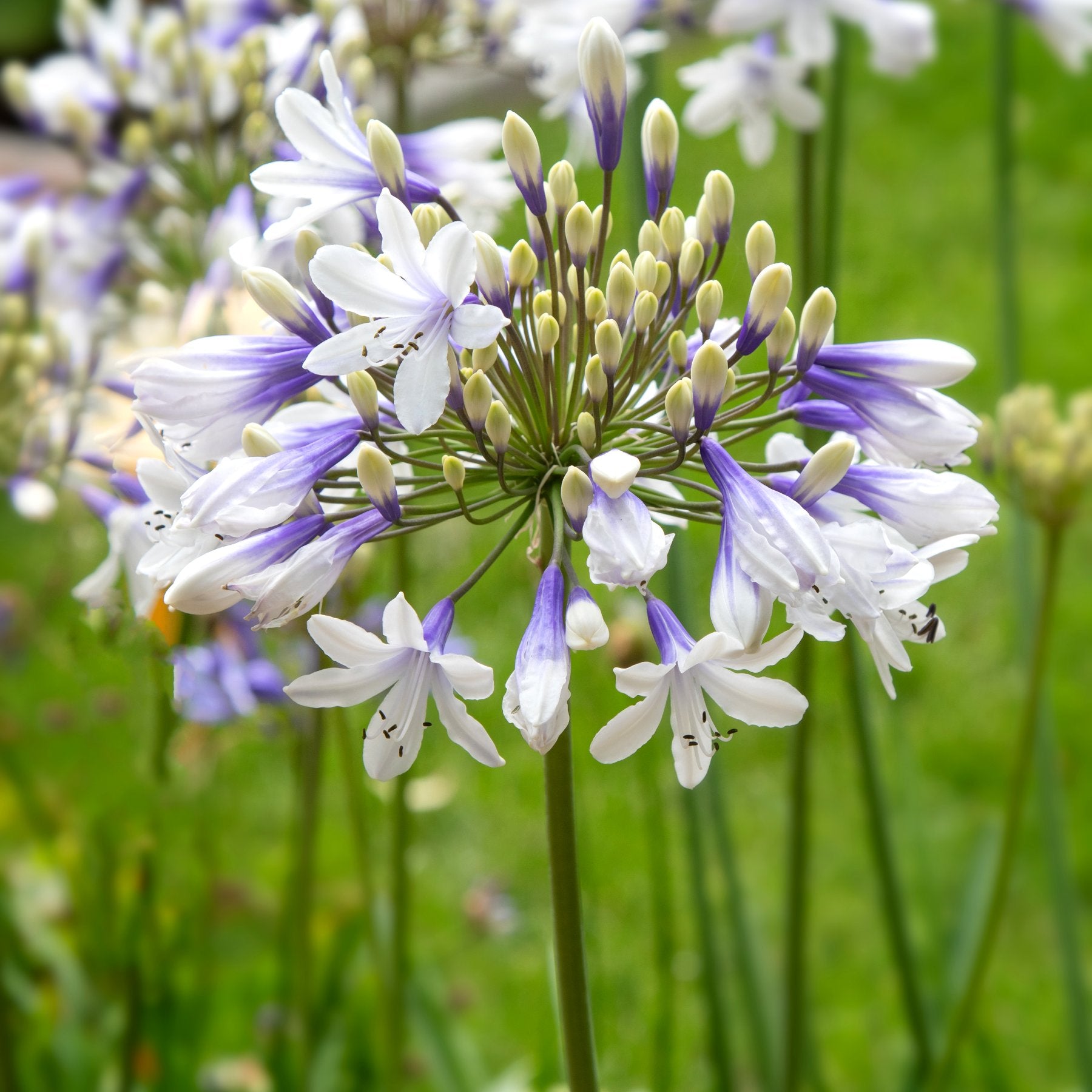Seasonal Agapanthus Care: Planning For Wintertime and Summer
Grasping the Art of Agapanthus Care: Crucial Actions for Healthy And Balanced Development and Vibrant Blossoms
In the world of cultivation, the cultivation of agapanthus stands as a gratifying venture for those who look for to support these elegant flowering plants. With their striking flowers and elegant foliage, agapanthus has caught the focus of gardeners worldwide. Nevertheless, achieving ideal development and lively blooms calls for a nuanced technique that incorporates different crucial steps. From choosing the ideal range to grasping trimming techniques, the journey in the direction of cultivating prospering agapanthus plants is complex and holds the vital to opening the complete possibility of these botanical treasures.

Selecting the Right Agapanthus Variety

When picking the ideal Agapanthus selection for your yard, think about variables such as climate suitability, bloom color, and growth habit. Furthermore, consider the climate in your region to ensure the Agapanthus range you select can grow in your details conditions. Recognizing the growth habit of various Agapanthus ranges is essential for appropriate placement within your garden.
Ideal Growing Conditions
Taking into consideration the optimal environmental requirements is crucial for effective Agapanthus growing. Agapanthus plants are sensitive to cold temperatures and ought to be secured from frost during wintertime months.
To ensure healthy development and dynamic blossoms, plant Agapanthus bulbs at a deepness of concerning 2-4 inches and room them 8-12 inches apart. Mulching around the base of the plants assists keep wetness and suppresses weed growth.
Watering and Feeding Tips
Keeping correct moisture levels and giving essential nutrients are key aspects in the treatment regimen for Agapanthus plants. When it comes to sprinkling Agapanthus, it is critical to strike an equilibrium. These plants prefer regularly damp soil however are prone to root rot if overwatered.
Feeding Agapanthus is necessary for promoting healthy development and respected blooms. Apply a well balanced fertilizer, such as a 10-10-10 formula, in the early spring as brand-new growth emerges. By complying with these watering and feeding tips, you can ensure your Agapanthus plants prosper and produce vibrant, long-lasting blossoms.
Pruning Methods for Agapanthus
Pruning Agapanthus plants at the ideal times and with proper strategies is important for maintaining their health and wellness and promoting optimum development and blooming. The perfect time to trim Agapanthus is in late wintertime or early spring prior to brand-new growth emerges.
For flowered stems, wait up until the blooms have find more info perished and after that trim them back to the base. This not only cleans up the plant's appearance yet additionally motivates the growth of new flower buds. Deadheading spent blossoms can additionally redirect the plant's energy right into generating more flowers instead than establishing seeds. Nonetheless, if you intend to collect seeds for propagation, why not check here leave some blossoms to completely dry and mature on the plant.
Remember to make use of tidy, sharp devices to make exact cuts and lower the threat of introducing conditions. Agapanthus. Routine pruning will certainly help keep your Agapanthus looking healthy and balanced and neat while making certain a bountiful screen of gorgeous blooms
Dealing With Usual Insects and Illness
After making certain appropriate trimming techniques for Agapanthus, it is crucial to address typical insects and illness that can influence the wellness and vitality of these plants. One common bug that impacts Agapanthus is the Agapanthus gall midget.
Another typical problem is fungal fallen leave spot, which provides as this website dark sores on the leaves. To stop fungal illness, ensure great air circulation around the plants, stay clear of overhead watering, and eliminate any kind of contaminated leaves without delay. Additionally, Agapanthus plants can deal with root rot if they are grown in poorly draining dirt. To stop this, plant Agapanthus in well-draining soil and prevent overwatering. By being cautious and taking timely activity versus conditions and insects, you can assist your Agapanthus plants grow and generate lively blooms.
Conclusion
In conclusion, understanding the art of agapanthus treatment includes choosing the right range, supplying suitable growing problems, appropriate watering and fertilizing, appropriate trimming strategies, and resolving common insects and diseases. By complying with these crucial actions, you can ensure healthy growth and vibrant blossoms for your agapanthus plants. Bear in mind to consistently check and keep your plants to advertise their total health and durability.
To ensure healthy and balanced development and lively blossoms, plant Agapanthus light bulbs at a deepness of concerning 2-4 inches and area them 8-12 inches apart. By following these watering and fertilizing suggestions, you can guarantee your Agapanthus plants grow and generate dynamic, resilient blossoms.
One usual pest that influences Agapanthus is the Agapanthus gall midge. Furthermore, Agapanthus plants can suffer from origin rot if they are planted in poorly draining pipes dirt. By complying with these vital steps, you can make sure healthy growth and lively flowers for your agapanthus plants.